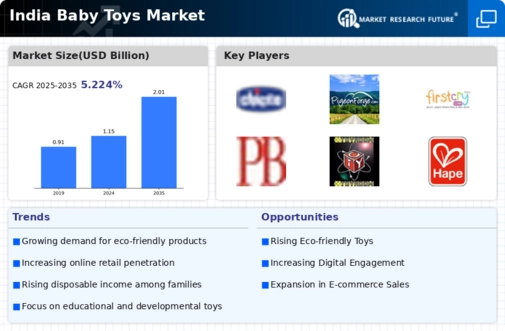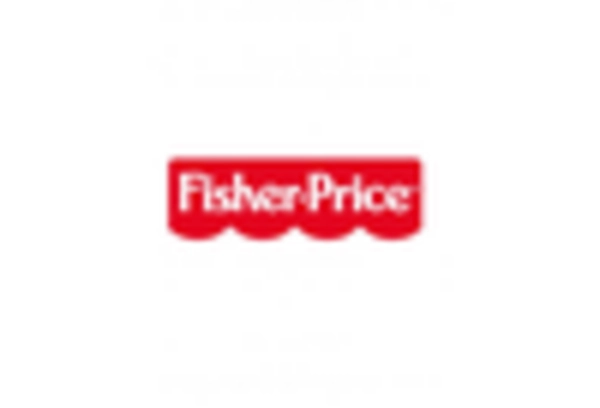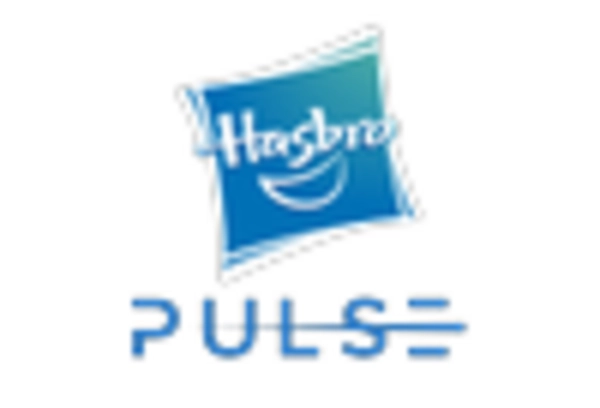The baby toys market in India is characterized by a dynamic competitive landscape, driven by innovation, consumer preferences, and a growing emphasis on safety and educational value. Major players such as Mattel (US), LEGO (DK), and Fisher-Price (US) are actively shaping the market through strategic initiatives. For instance, Mattel (US) has focused on expanding its product lines to include more sustainable materials, reflecting a broader trend towards eco-friendly toys. LEGO (DK) continues to innovate with its educational kits, which align with the increasing demand for STEM-focused products. Fisher-Price (US) emphasizes developmental toys that cater to various age groups, thereby enhancing its market presence and consumer loyalty. Collectively, these strategies indicate a competitive environment that prioritizes innovation and consumer engagement.
In terms of business tactics, companies are increasingly localizing manufacturing to reduce costs and improve supply chain efficiency. This approach not only enhances responsiveness to market demands but also aligns with government initiatives promoting Make in India. The market structure appears moderately fragmented, with several key players holding substantial market shares while also facing competition from local manufacturers. The collective influence of these major companies shapes pricing strategies and product offerings, creating a competitive yet collaborative atmosphere.
In October 2025, LEGO (DK) announced a partnership with a leading Indian educational institution to develop a series of interactive learning toys aimed at preschoolers. This strategic move is significant as it not only enhances LEGO's brand visibility in the educational sector but also aligns with the growing trend of integrating play with learning. Such initiatives may potentially position LEGO as a leader in educational toys, appealing to parents seeking quality learning experiences for their children.
In September 2025, Fisher-Price (US) launched a new line of toys made from 100% recycled materials, marking a pivotal shift towards sustainability. This initiative is likely to resonate with environmentally conscious consumers and could enhance brand loyalty among parents who prioritize eco-friendly products. The move underscores the importance of sustainability in the current market, suggesting that companies that adopt such practices may gain a competitive edge.
In November 2025, Mattel (US) unveiled a digital platform that allows parents to customize toys based on their children's preferences and developmental needs. This innovative approach not only enhances customer engagement but also reflects the increasing integration of technology in the toy industry. By leveraging digital tools, Mattel may effectively differentiate itself in a crowded market, appealing to tech-savvy consumers.
As of November 2025, current trends in the baby toys market indicate a strong shift towards digitalization, sustainability, and the integration of artificial intelligence in product development. Strategic alliances among companies are becoming more prevalent, fostering innovation and enhancing competitive positioning. The competitive landscape is likely to evolve, with a pronounced shift from price-based competition to a focus on technological advancements, product innovation, and supply chain reliability. Companies that can effectively navigate these trends may secure a more favorable position in the market.

















Leave a Comment